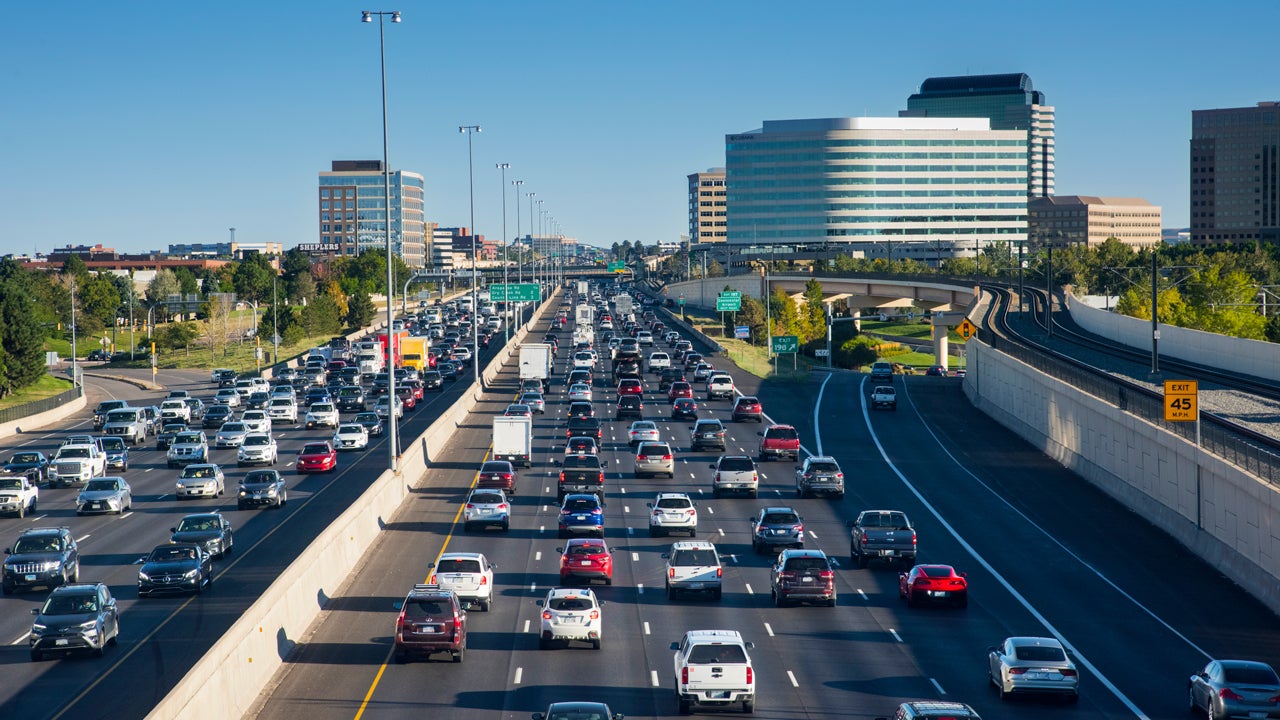Why is car insurance so expensive in 2023?

If you’re asking yourself why your car insurance rate went up, you are not alone. According to proprietary rate data from analytics company Quadrant Information Services, the average annual rate for a full coverage policy in 2022 was $1,771. In 2023, that same policy may cost you $2,014, an increase of 14 percent. Bankrate’s insurance editorial team, which includes three licensed agents, explores why.
Why is car insurance so expensive in 2023?
Before delving into the reasons behind rising car insurance rates in 2023, let’s dive into how car insurance works from a (very) high level.
Car insurance is like a pool. Your company determines your rate (based on your personal rating factors), collects your premium and tosses it into a hypothetical pool. The company then draws from this pool to pay for claims for anyone insured with them. It also uses underwriting software and actuarial data to determine how much money needs to be in the pool on reserve to pay out projected claims.
Some types of rate increases are individual to you and your rating factors. For instance, car insurance companies may use your ZIP code as a rating factor (in most states). As such, your rate could go up after moving from a rural town to a bustling metropolis. This is because, statistically speaking, you’re more likely to be involved in a car accident in an urban area due to more vehicles on the road. If your company determines that it’s more likely that you will need to file a claim at your new address, it will raise your rates to offset this higher risk.
Other rate increases are general and occur even though you haven’t changed your policy or driving habits. If a company learns that it doesn’t have enough money in its pool to pay for projected claims, it must raise rates to build back its claims reserve by issuing region-wide, state-wide or even company-wide rate increases. These general rate increases are the main factors behind rising car insurance rates in 2023. We investigated how and why money is leaving the proverbial car insurance pool and what this means for drivers nationwide.
Economic inflation
Inflation. It’s one of the most significant post-pandemic hurdles the U.S. continues to face, and it has a rippling impact that stretches beyond your grocery or electric bill. Inflation impacts your car insurance rates, too.
Consider the expenses that can follow a car accident: hospital visits, outpatient medical care, car parts, labor costs, rental car expenses, or in the event of a total loss, a claims check to cover the cost of a replacement vehicle. Although there are signs that inflation may be cooling, these essential goods and services remain high.
The Consumer Price Index (CPI) data below might put into perspective how inflation continues to impact car insurance claims:
| Product or service | Cost increase from January 2022 to January 2023 |
|---|---|
| Medical care services | 3.0% |
| Hospital and related services | 4.0% |
| Medical equipment and supplies | 7.0% |
| Vehicle maintenance and repair | 14.2% |
| Motor vehicle parts and equipment | 8.3% |
| Car and truck rental | 1.8% |
| New vehicles | 5.8% |
| Used vehicles | -11.6% |
One anomaly here is the decrease in cost for used cars, especially considering the recently bizarre used car market, where used vehicles often cost as much as new. However, this sharp decrease is the used car market leveling out after an unprecedented 37 percent increase in price from December 2020 to December 2021. It’s important to point out that the other inflated claims-related costs can outweigh the decreased cost for used vehicles. In other words, used vehicle car insurance rates might not go down even if the overall price for a used vehicle returns to baseline.
Bankrate spoke to Mark Friedlander, director of corporate communications for the Insurance Information Institute, and he shed some light on another way the pandemic’s economy has come back to haunt the current car insurance market.
A recent analysis by the Insurance Information Institute (Triple-I) showed that U.S. auto and homeowners insurance premiums lagged behind the inflation rate in 2020 and 2021, laying the groundwork for the premium increases which occurred last year and will continue into 2023.
— Mark Friedlander Director of corporate communications, Insurance Information Institute
In essence, inflation found its footing in 2020 and soared through 2022. However, stay-at-home orders and social distancing had fewer drivers on the road, leading to below-average claims frequency. As a result, car insurance companies didn’t feel the need to raise rates in tandem with inflation since claims were down. Now, they’re playing catch up.
Social inflation
When asked about rising car insurance rates in 2023, Greg McBride, CFA, Bankrate’s chief financial analyst, told us, “While rising vehicle prices and higher repair costs have translated into increasing auto insurance premiums in the past couple of years, the cost of litigation is ever-increasing and not a byproduct of the supply-demand imbalances that have fed inflation.”
This increase in litigation might boil down to one thing: social inflation.
Compared to economic inflation, social inflation is a bit harder to define. Broadly, social inflation is the general public’s prevailing attitude toward big business, including insurance companies. This attitude ebbs and flows, but currently, social inflation is high (perhaps due to our challenged economic environment, as one of the drivers of social inflation is income inequality).
Since consumers feel less favorably towards insurance companies, they are more likely to:
- File claims: During periods of high social inflation, policyholders file claims that they may have otherwise handled out of pocket.
- Hire an attorney and take insurance companies to court: High social inflation leads policyholders to feel that their claims payout was too low, even if the amount was appropriate based on the loss. In these instances, they might hire an attorney and take the insurer to court, leading to higher litigation costs for the carrier. This scenario may be most common in personal injury protection (PIP) claims.
- If on a jury, award a large settlement to winning plaintiffs: When there are negative attitudes toward the insurance industry, juries are more likely to award a hefty amount — also called “nuclear settlements” — to the plaintiff (or injured party) in insurance cases.
Harkening back to our pool analogy, the consequences of high social inflation cause higher-than-average premium amounts to leave the pool, forcing insurance companies to raise rates to ensure they have the funds to pay for future claims.
Premium give-backs
During the onset of the pandemic, auto insurers returned about $14 billion of premiums back to their policyholders via refunds and policy credits, typically called give-backs. At the time, claims frequency was low and insurers had a surplus of funds. Companies might have also felt the need to assist their customers during this unparalleled moment of economic uncertainty.
On the one hand, these give-backs may have helped millions of people when they needed it most. Unemployment was high, and for many, these give-backs could have felt like an unexpected gift. On the other, these programs may have led car insurance companies to be less equipped to handle the onslaught of claims that followed when drivers returned to the road in 2021 and 2022.
Claims frequency and severity
Although traffic levels decreased during the height of the pandemic, those who were on America’s empty roads exhibited risky driving behavior.
According to a study done by the National Highway Traffic Safety Administration (NHTSA), more people died in traffic accidents in 2020 than in any other year since 2007. Additionally, 2020 saw speeding-related crashes increase by 11 percent and alcohol-related crashes by nine percent.
Unfortunately, this trend is only getting worse. The NHTSA estimates that 9,560 people died in car accidents during the first four months of 2022, a rate seven percent higher than the same period in 2021.
Bill Madison, chief executive officer of LexisNexis’ insurance segment, weighed in, saying, “We believe that much of the claims severity increases that the industry has observed are likely here to stay, and rates are unlikely to drop to pre-pandemic levels. At the same time, we do anticipate that the hard insurance market will eventually soften, and rate increases will become more moderate over time.”
In other words, car accidents — and car insurance rates — may never be as low as they were pre-COVID. When claims go up in your area, everyone’s premiums can be impacted, even if you didn’t have an accident. Rates might stabilize in the future, but for now, insurance companies have to raise premiums to compensate for this overall higher risk.
Labor shortages
We may have some ways to go, but the computer chip shortage that plagued 2021 and 2022 seems to be nearing its end, at least according to J.P. Morgan. However, the U.S. is still contending with a massive labor shortage.
The U.S. Chamber of Commerce reports that the U.S. added an astounding 4.5 million jobs in 2022, but compared to February 2020, we’re missing almost three million workers.
Some Americans have found it more economical to stay home to provide childcare, while others started their own businesses during the lockdown. Three million adults took early retirement, and as of February 2023, nearly 275,000 working-age Americans (18-64) have died from COVID.
There are many reasons why the U.S. is experiencing a labor shortage, but a labor shortage means one thing for car insurers: higher rates.
Imagine you were involved in a car accident resulting in significant vehicle damage. However, your area has a shortage of adjusters, leading to a longer wait between your accident and your claims estimate. This delay means you’re in a rental car for longer than usual, and you max out your rental car reimbursement coverage. Or, perhaps your insurance company has enough adjusters, but the mechanics in your area are backed up. Maybe there are enough adjusters and mechanics, but parts are delayed due to a lack of machinists — there are just not enough workers to go around.
Out of all the coverage types your insurance company could max out on, rental car reimbursement may be minimal (the maximum payout amount might range from $900 to $1,500, depending on your policy). But, multiply this by the millions of policyholders that could have found themselves in this situation and those payouts don’t seem so insignificant anymore.
When will car insurance rates go back down?
Don’t bet on declining auto insurance premiums. A more modest pace of increases is probably the best we can hope for.
— Greg McBride, CFA Bankrate chief financial analyst
The short (and potentially frustrating) answer is that no one knows when car insurance rates will go back down, if at all.
Cate Deventer, insurance writer and editor for Bankrate, explains, “Filing for a rating change, receiving approval and implementing the change takes time, which means that car insurance companies are still catching their rates up to the inflation from 2022. Because of this lag time, we think that car insurance rates will continue to rise for at least part of 2023, despite inflation cooling in recent months.”
Car insurance rates don’t increase overnight. After actuaries review accident statistics (based on historical data, which takes time to collect), they evaluate whether their company needs to take a rate hike to meet its claims obligations (or add more money to the premium pool). If the actuaries find that a rate increase is needed, the company must file a request with the Department of Insurance in each state that the hike is necessary.
To further complicate matters, some states (like California) took an indefinite pause on car insurance rate increases, even if carriers could prove that these increases were necessary for the financial health of their company. Only recently did the state lift this ban, so Californians could be seeing rate increases for the first time in years.
Simply put, you may want to budget for rising car insurance costs, indefinitely.
The bottom line
Car insurance is a many-faceted product, so the reasons behind rising car insurance rates in 2023 are nuanced. It may not be as simple as inflation or a scarcity of computer chips. After all, what kind of inflation are we talking about, and isn’t the computer chip shortage working itself out?
Instead, it may be better to consider the struggles that our economy (and people) have endured over the last three years and understand that full recovery takes time. We may also need to admit that the world we remember before COVID might be gone for good.
There is hope. This tumultuous car insurance market might be an ideal time to compare quotes. Rates are in flux, and some carriers are weathering the storm better than others. You might also save some money by reviewing your company’s discount opportunities. It’ll take some work, but shopping around — either by contacting companies directly or working with an independent agent — could be more impactful than you think.
And finally, you may want to avoid falling into the habit of post-pandemic risky driving. Your rates (and loved ones) will thank you.






